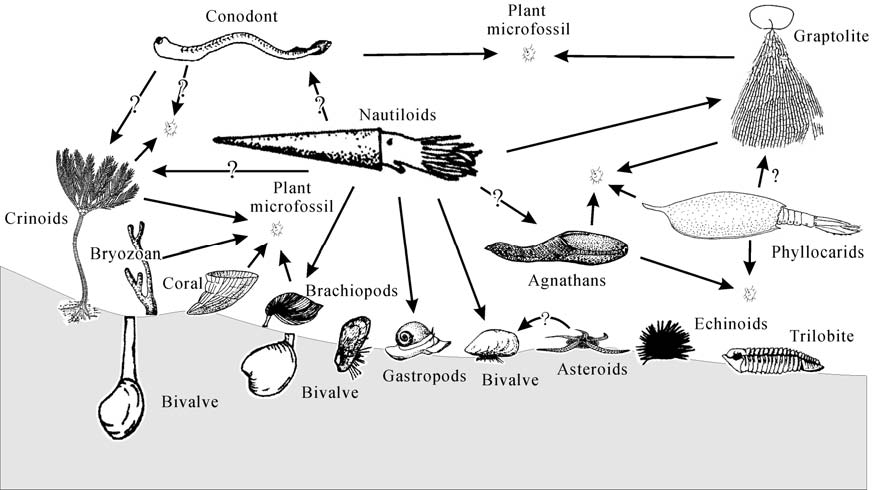
The Ordovician radiation is among the major bioevents in earth history that have drawn great attention from geologists all over the world. Many opinions and hypotheses have been proposed on the triggering and controlling factors of the radiation. A recent review of the past years’ studies of this biotic event in South China conducted by Profs Zhang Yuandong, Zhan Renbin and others from Nanjing Institute of Geology and Palaeontology, Chinese Academy of Sciences, helps understand intensively this radiation event.
The studies conducted by Zhang et al show that the Ordovician radiation began in late Early Ordovician. The biodiversity increased stepwisely and tripled that of Cambrian. Instead of a similar pattern of radiation, different fossil groups, especially those with distinct ecotypes vary in biodiversification trajectories and timings. Moreover, the research show that the process and pattern of Ordovician biodiversification also vary geographically and controlled by multiple factors such as latitude and climate.
In the paper, Zhang et al suggest that, as a result of the Ordovician radiation, the basic community structure of the Palaeozoic Evolutionary Fauna had been established, and a complex but consistent food web may have also formed. After the Ordovician radiation, marine biodiversity remained relatively stable for over 200 million years until the end-Permian mass extinction. They proposed that a burst of filter feeders and strenthening of symbiosis are two major characterstics of the Ordovician radiation, which distinguish the event from the preceded Cambrian Explosion.
Based on the analysis of the compiled data, Zhang et al summarize the possible causes and controlling factors of the Ordovician radiation, which include the increase of global tectonic activities, development of island-arcs and terranes, climate and sea-level changes, intensified volcanic activities, superplume formation, changes in substrate, and asteroid impacts, etc. However, none of them solely can convincingly explain the Ordovician radiation. On the other hand, the interactions between organism groups are also critical and should be considered intensively.
This paper is published on recent issue of Science China (Earth Science) in both Chinese and English.
ZHANG YuanDong*, ZHAN RenBin, FAN JunXuan, CHENG JunFeng & LIU Xiao, 2010. Principal aspects of the Ordovician biotic radiation. Science China (Earth Science), 53(3): 382–394
Download:
